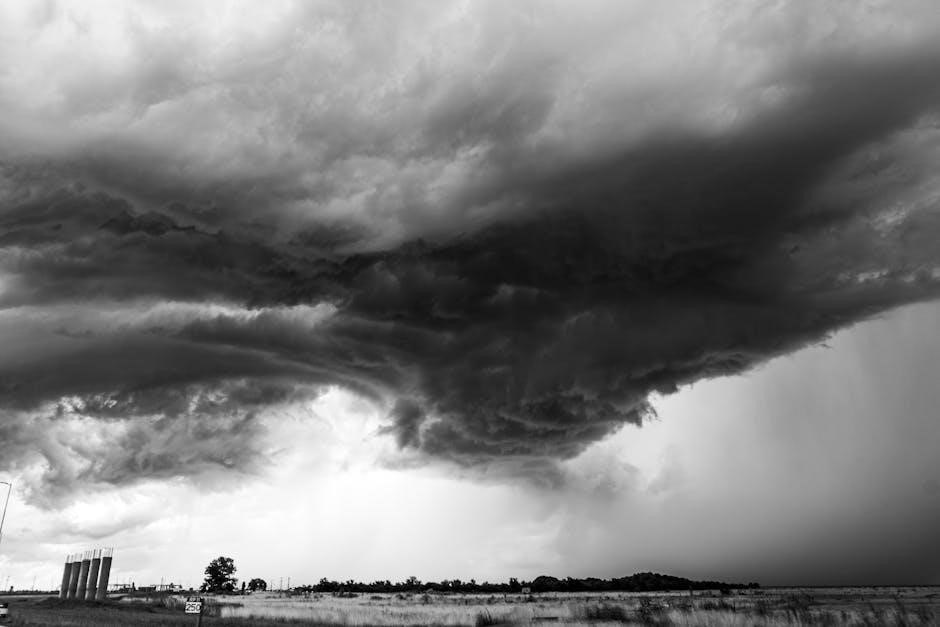The guide to the wind load provisions of ASCE 7-10 provides essential information on designing and constructing buildings to withstand wind loads safely and efficiently always using .
Overview of the Standard
The guide to the wind load provisions of ASCE 7-10 is a comprehensive resource that outlines the minimum design loads for buildings and other structures.
The standard provides a framework for designing and constructing buildings to withstand various loads, including wind loads.
The guide is based on the 2010 revision of the standard, which significantly reorganized the wind load provisions, expanding them from one to six chapters.
This reorganization aimed to improve the clarity and consistency of the provisions, making it easier for engineers and architects to apply them in practice.
The standard is widely adopted in the United States and is considered a benchmark for wind load design.
The guide is an essential tool for professionals involved in the design and construction of buildings, providing them with the necessary information to ensure that their structures are safe and resilient.
The standard is regularly updated to reflect new research and advancements in the field, ensuring that it remains a relevant and reliable resource.
Overall, the guide to the wind load provisions of ASCE 7-10 is a critical component of the building design and construction process.
It helps to ensure that buildings are designed and constructed to withstand wind loads safely and efficiently.
The guide is a valuable resource for anyone involved in the building industry.
Importance of Understanding Wind Load Provisions
Understanding wind load provisions is crucial for ensuring the safety and resilience of buildings and structures.
The guide to the wind load provisions of ASCE 7-10 provides essential information for engineers, architects, and builders.
It helps them design and construct buildings that can withstand various wind loads, reducing the risk of damage or collapse.
The provisions outlined in the guide are based on extensive research and testing, taking into account factors such as wind speed, direction, and terrain.
By following these provisions, professionals can ensure that their buildings meet the required safety standards.
The guide is particularly important for buildings located in areas prone to high winds, such as coastal regions or areas with extreme weather conditions.
It provides a framework for designing and constructing buildings that can resist wind loads, protecting occupants and minimizing damage.
Overall, understanding wind load provisions is critical for ensuring public safety and preventing economic losses.
The guide is a valuable resource for professionals involved in building design and construction.

History and Development of ASCE 7-10
The standard was developed by the American Society of Civil Engineers with updates and revisions always being made to improve safety and efficiency using .
Revisions and Updates to the Standard
The guide to the wind load provisions of ASCE 7-10 has undergone significant revisions and updates to improve the standard and ensure safety.
The updates include changes to the wind load provisions, expanding them from one to six chapters, and providing more detailed information on designing and constructing buildings to withstand wind loads.
The American Society of Civil Engineers has made these changes to reflect new research and data, and to provide a more comprehensive guide for engineers and architects.
The revisions and updates to the standard are crucial in ensuring that buildings are designed and constructed to be safe and resilient in the face of wind loads.
The guide provides essential information on the revisions and updates, including example problems and case studies, to help engineers and architects understand and apply the new standard.
The updates to the standard are an important step in improving building safety and reducing the risk of damage from wind loads.
Overall, the revisions and updates to the standard are a significant improvement to the guide to the wind load provisions of ASCE 7-10.

Key Components of ASCE 7-10 Wind Load Provisions
Guide to the wind load provisions of ASCE 7-10 includes wind speed maps and building classifications always using effectively.
Wind Load Calculations and Factors
The guide to the wind load provisions of ASCE 7-10 provides detailed information on wind load calculations and factors, including wind speed, direction, and terrain effects.
These calculations are crucial in determining the wind loads that a building or structure can withstand, and are used to design and construct buildings that are safe and resilient.
Factors such as building height, size, and shape, as well as surrounding terrain and vegetation, are also taken into account in these calculations, ensuring that buildings are designed to withstand various wind conditions, using equations and formulas to determine wind loads, with accuracy and precision, every time, always.

Design and Construction Considerations
Designing and constructing buildings with wind load provisions requires careful planning and execution always using safety protocols and guidelines effectively every time with precision and accuracy.
Building Resilience and Safety
The guide to the wind load provisions of ASCE 7-10 plays a crucial role in building resilience and safety by providing a comprehensive framework for designing and constructing buildings that can withstand various wind loads.
This is achieved through the implementation of strict guidelines and protocols that ensure buildings are constructed with safety and resilience in mind, thereby protecting occupants and minimizing damage.
By following the provisions outlined in the guide, builders and designers can create structures that are better equipped to handle extreme weather conditions, ultimately reducing the risk of damage and injury.
Overall, the guide is an essential resource for anyone involved in the construction industry, providing valuable insights and information on how to build safer and more resilient structures.
The guide is widely used in the industry and is considered a key component of building design and construction.

Example Problems and Case Studies
The guide contains example problems and case studies to illustrate wind load provisions applications clearly always using .
Applying ASCE 7-10 Wind Load Provisions in Practice
The guide to the wind load provisions of ASCE 7-10 is essential for engineers and architects to apply the provisions in practice, ensuring buildings are designed and constructed to withstand wind loads safely and efficiently. The guide provides detailed information on the wind load provisions, including examples and case studies, to illustrate the applications of the provisions. By following the guide, practitioners can ensure that their designs comply with the standard, reducing the risk of damage or failure due to wind loads. The guide is a valuable resource for anyone involved in the design and construction of buildings, providing practical advice and guidance on applying the ASCE 7-10 wind load provisions in real-world scenarios, with a focus on safety and efficiency always.
and Future Directions
The guide to the wind load provisions of ASCE 7-10 has provided valuable insights and information on designing and constructing buildings to withstand wind loads. The standard has undergone significant changes, and the guide has reflected these updates, ensuring that practitioners have the most current information. As the field of engineering continues to evolve, future directions for the guide may include incorporating new technologies and methods for assessing wind loads. Additionally, the guide may expand to include more case studies and examples, providing further guidance for practitioners. The guide will remain an essential resource for ensuring the safety and efficiency of buildings, and its continued development will be crucial in addressing the challenges of wind loads. The future of the guide looks promising, with ongoing research and updates ensuring its relevance and effectiveness in the years to come, always providing accurate information.